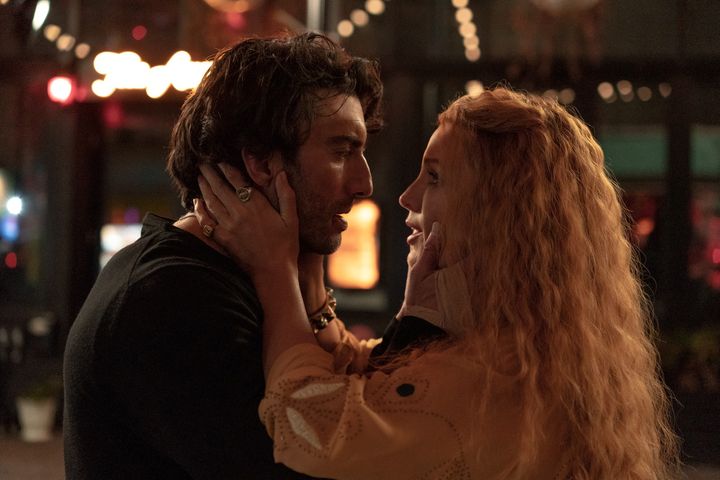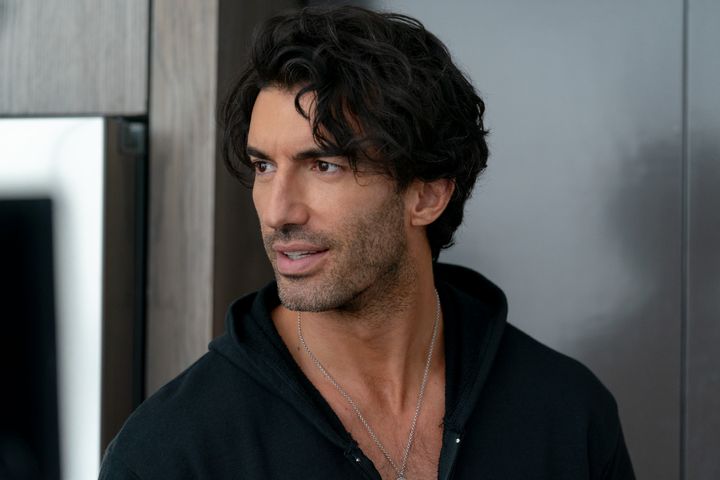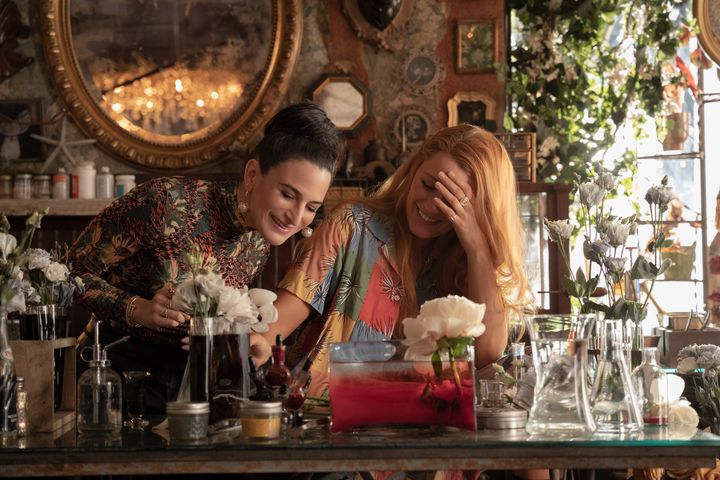
The credits to “It Ends With Us,” the film adaptation of Colleen Hoover’s best-selling novel, have just started to roll as my friend and I excuse ourselves to move past the two groups of women in our aisle.
One is made up of four young friends, and the other is a pair of women who are older than me but probably not as old as my mom would be if she was still alive. Both groups are still in their plush, leather, reclining chairs, snuggled under the blankets they brought from home. It’s as if each is at home having just turned the last page of a book, letting the emotion settle over them, not ready to return from a fictional world to the real one.
The all-female audience is like me; they left behind bedtimes for children or partners or pets to go out after work for a special, early preview of protagonist Lily Bloom’s (Blake Lively) emotional story from the novel. Presumably, they are fans of Hoover’s book, and the entire experience feels like the equivalent of staying up too late to turn another page.
But, instead of being alone in bed with the thrill of reading one more chapter, we’re all here together to see how the pages we’ve already read and posted about online and texted the group chat about are being brought to life through the “It Ends With Us” film adaptation, which hits theaters Friday. Christy Hall wrote the screenplay, and Justin Baldoni serves as director and stars as Ryle Kincaid.
Overall, the movie closely follows the plot of the viral BookTok sensation. On the evening of her father’s funeral, Lily Bloom meets neurosurgeon Ryle on the rooftop deck of his apartment complex. Lily is sitting on the edge, gazing out, when Ryle explodes through the door. Enraged, he takes out his aggression on one of the patio chairs. When he sees Lily and realizes that he’s not alone, he calms down, pulls out a joint, and the two share a conversation and an almost-kiss before Lily leaves, planning to never see him again. Months later, Lily unknowingly hires Ryle’s sister, Allysa (Jenny Slate), to work with her in her new flower shop.
Like the book, the movie flashes back-and-forth between Lily in high school (Isabela Ferrer) and Lily in present day. Young Lily falls in love with Atlas, a high school student experiencing homelessness (Alex Neustaedter) while grappling with the trauma of her father’s physical abuse of her mother. Older Lily falls in love with Ryle, reconnects with adult Atlas, and eventually, after Ryle becomes physically abusive, struggles to free herself from the cycle of domestic violence that shaped her traumatic childhood.

At its surface, “It Ends With Us,” captures the visceral essence of Hoover’s book. The strength of the adaptation in this regard was intentional. Early on in the process, a group of fans were brought in to read a draft of the script and ensure that the movie did the book justice. And, for fans of the book, it probably does. But I also left the theater wondering if the exclusion of a key scene or two undermines the impact of the film.
“Is it because it’s been a while since I read the book or was that the most faithful adaptation of a book I’ve ever seen?” my friend asks me as we walk out of the theater.
“I think it was,” I reply, reaching for my popcorn bag and leftover M&M’s.
As my friend drives us home, we begin to unpack the movie, moving past our initial reactions — “it was so good,” “Blake Lively was incredible,” “Brandon Sklenar made a good Atlas.” We also discuss arguably the biggest difference between the book and the movie — the viewpoint. In the novel, Lily’s story is told in the first-person point of view. The reader is inside Lily’s head, experiencing the sweet, small moments when she falls in love for the first time with Atlas as a teen, and the lust and momentum of her intoxicating relationship with Ryle.
In the movie, the narrative is told in the third-person point of view. But it doesn’t feel that way, and this is largely due to the reimagining of the plot and the withholding of information that the book frontloads. In that first rooftop scene in the book, Lily reveals that her dad physically abused her mom. In the movie, she doesn’t. Instead, she calls herself an unreliable narrator and that abuse is shown through flashbacks that impacts her emotional processing of the present.
Unlike the book — which makes Ryle’s abuse clear from the beginning — the movie makes the lines Ryle crosses intentionally blurry. This is clear in the first violent incident when Ryle hits Lily’s face because she laughs when he burns a dish in the oven (a moment based on an incident of real-life abuse between Hoover’s dad and mom). When Ryle pulls the casserole out, he forgets to use an oven mitt, jerking his arm back, elbowing Lily in the eye.
The cinematography is disorienting and a little fuzzy, the camera too close and the movements too fast for a viewer to get a good read on the situation, to know if Ryle’s contact with Lily’s face is intentional or accidental. Lily doesn’t know either. Or, maybe, in her gut, she knows it is intentional, but she is falling in love with Ryle and doesn’t want it to be true, doesn’t want to be in a relationship that resembles the one between her mother and father.

Maybe she tells herself it was an accident. It will never happen again.
Ryle’s gaslighting in the aftermath of Lily’s black eye — “we” made a mess — makes even the viewer question what is true. In this way, the movie captures Lily’s circular thinking and rationalization, using cinematography to explore how abuse can make people feel like an unreliable narrator.
As my friend and I drive farther away from the theater, we agree that we like those changes. They are effective. The beginning and middle of the movie works. It’s the climax that we’re questioning: There’s a change at that pivotal moment when Lily decides to ask Atlas for help and leave Ryle that has been nagging at me since the movie ended.
“Cycles exist because they are excruciating to break. It takes an astronomical amount of pain and courage to disrupt a familiar pattern. Sometimes it seems easier to just keep running the same familiar circles, rather than facing the fear of jumping and possibly not landing on your feet. My mother went through it. I went through it,” Lily narrates in the book.
While the movie allows the viewer to feel as disoriented as Lily does about the abuse, it fails to show how she breaks this cycle once she accepts it is a cycle that needs to be broken. The viewer sees the act of violence that becomes her final straw, but we don’t get to hear the conversations that take place with Atlas when she asks for help, and eventually Ryle when she begins the process of leaving him. We get a snippet of the support Allysa offers as a best friend, but we only get montages of resiliency to fill in the blanks of Lily rebuilding her life.
Hoover says in her Author’s Note that she has historically written books to entertain, not to educate, persuade or inform. But she acknowledges that “It Ends with Us” is different.
“I wanted to write something realistic to the situation my mother was in — a situation a lot of women find themselves in,” Hoover writes, saying the book was the most grueling thing she’s ever written. “I wanted to explore the love between Lily and Ryle so that I would feel what my mother felt when she had to make the decision to leave my father.”

As my friend pulls into our neighborhood, I think about those women in the theater. I think about how most — if not all — of them read the book. Most of them, like me, had background information from the novel to fill in the blanks, to contextualize the montages, to give meaning to a woman leaving an abusive marriage, and the hard conversations and firm boundaries that decision necessitated.
But the movie doesn’t do this — it bypasses the hard realities of Lily’s bravery — and the women who are going to fill theaters across the country this weekend deserve more. In a world in which intimate partner violence impacts an estimated 12 million people a year, and 1 in 4 women over the age of 18 have been the victim of severe physical violence by an intimate partner, it is imperative for cultural depictions like this to provide hope and also proof that it is possible to escape that cycle.
A common criticism of the novel is that it glamorizes abuse. While I think that claim hinges on interpretation, I do believe the movie is more at risk for this critique to ring true because of the uneven, rushed pacing at the end. Because the film spends less time on how Lily leaves and more time on how she falls in love, the depiction is unbalanced.
However, while all of these interpretations are possible, I don’t think that the movie makes abuse sexy or exciting. If anything, it shows how complicated cycles of abuse are, and how rationalization and gaslighting make women feel like they can neither be the protagonist of their own life nor tell someone their own story.
After my friend has dropped me off, and I’ve walked inside and chatted with my husband, he goes to bed, but I’m still awake. I’m thinking about my friend’s original question — “Is it because it’s been a while since I read the book or was that the most faithful adaptation of a book I’ve ever seen?”
Like everything in life when you really think about it, the answer falls somewhere in the middle. Yes, the movie captures the essence of Hoover’s story in a way that few book-to-film adaptations accomplish, and I walked out of the theater feeling the same way I did after I closed the book and set it on my bedside table.
But did it also miss some of the complexity Hoover brings to the ending and reinforces in her Author’s Note? Yes.
Do I think fans of the book will care? Probably not.
Does it matter? Absolutely. Women deserve to see the full range of a complex experience that they or a loved one could encounter.
Disclaimer: The copyright of this article belongs to the original author. Reposting this article is solely for the purpose of information dissemination and does not constitute any investment advice. If there is any infringement, please contact us immediately. We will make corrections or deletions as necessary. Thank you.
